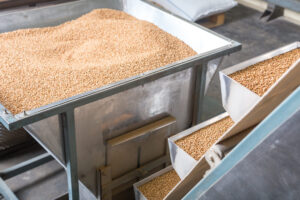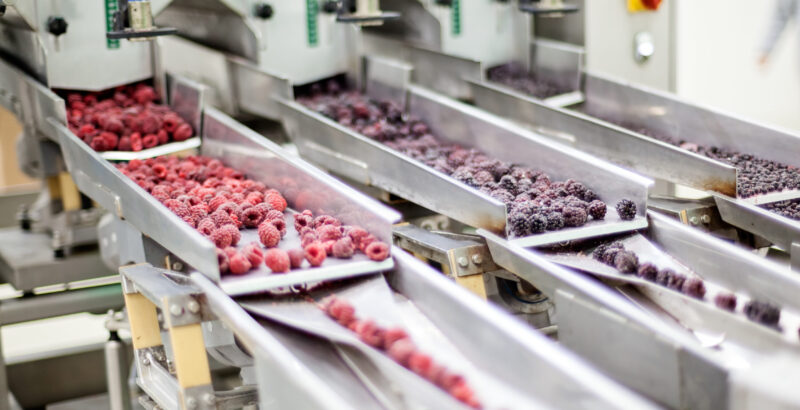A large part of the food protection umbrella involves protecting agriculture processing, storage and transportation facilities
What does the fall harvest have to do with pest management you ask? With increased scrutiny on ensuring the safe harvesting, transportation, processing, storage and delivery of food from farm to table – there is plenty pests can do to upset the apple cart.

Industrial equipment for sorting and packaging grains can be home to various pests.
Pests including rodents, birds, flies, cockroaches, birds and stored product pests (i.e., beetles, weevils, etc.) not only spoil raw ingredients by eating and defecating in them but they are prime carriers of food-borne bacteria including E. coli and salmonella.
A large part of the food protection umbrella involves protecting agriculture processing, storage and transportation facilities from these threatening pests.
An IPM Approach Works Best
Pest management in agriculture processing facilities is challenging task. Whether it’s pests entering the facility in deliveries of fruits, vegetables, grains, spices and seeds, in packaging materials or through open loading dock doors, agriculture processing facilities require comprehensive, innovative pest management programs.
The most successful approach to pest management in agriculture processing facilities is the use of integrated pest management (IPM) programs that involve a holistic approach to preventing and eliminating pests.
IPM solutions include three primary steps: inspection, identification and treatment. IPM programs use current, comprehensive information on the life cycles of pests and their interactions with the environment and are essential in detecting and controlling pests in food processing facilities.
Harvest season is a prime time for pests to move from the field into processing facilities as they hitch a ride indoors packaging in the commodity itself. The “Trojan horse” approach is often the primary way pests gain access to processing facilities.
Rodents can easily find their way into a load of seed or grain or inside pallets or storage bins/tubs destined for a processing facility by climbing into the open bed of a truck as it is being loaded or is parked overnight waiting to be unloaded. Open bed trucks are a prime target for pest birds that leave behind their disease-laden droppings as they are parked during the loading and unloading process.
Establish Standard Operating Procedures
Because of the crucial role pest management plays in agriculture processing facilities, it is important that facility managers work with their pest management company to develop and establish standard operating procedures (SOPs), including methods of inspection and treatment, as well as provide appropriate documentation. The SOPs should include the following:
- Document Your Program – Document all procedures for all current or anticipated pest management activities, including inspections and audits. The written procedures should be detailed and include frequency of action and reasons behind the actions.
- Sanitation and Cleaning Practices – Make sure storage bins are cleaned before product is placed in them. Pay attention to sanitation practices on the exterior of structures as well. Loading docks and railroad sidings often have spilled product that can attract pests.
- Exclusion Practices – Denying pests access to a facility is the first line of defense. Seal cracks in the foundation, install door sweeps and air doors, and secure screens over ventilation and HVAC openings,
- Pest Sightings and Pest Activity Logs – These logs should contain the exact dates, times and locations of pest sightings, as well as the type of pest.
- Treatment Records – These should contain the details of each performed treatment, ensuring they’re accurate and up to date, and include both inspection dates and the locations of treatments performed.
- Pest Trend Reports – Since the final determination of the source of a pervasive pest problem requires expertise, pest technicians will develop these reports based on inspections, pest device activity including cameras, pest sightings and activity logs.
- Facility Layout – The pest technician and plant managers should keep an updated layout of the facility listing pest management activity information and noting any changes to the placement of pest control equipment and why it was done.
- Responsible individuals. Those persons who oversee recordkeeping and pest management oversight between professional inspections.
- Corrective measures. Should there be a need for a change in or a deviation from the pest management program, these measures will outline what must be done instead.
Discover The Sprague Difference
For more information on how Sprague Pest Solutions can assist you establish an effective pest prevention or management program in your agriculture processing facility, call 855.805.0755.

